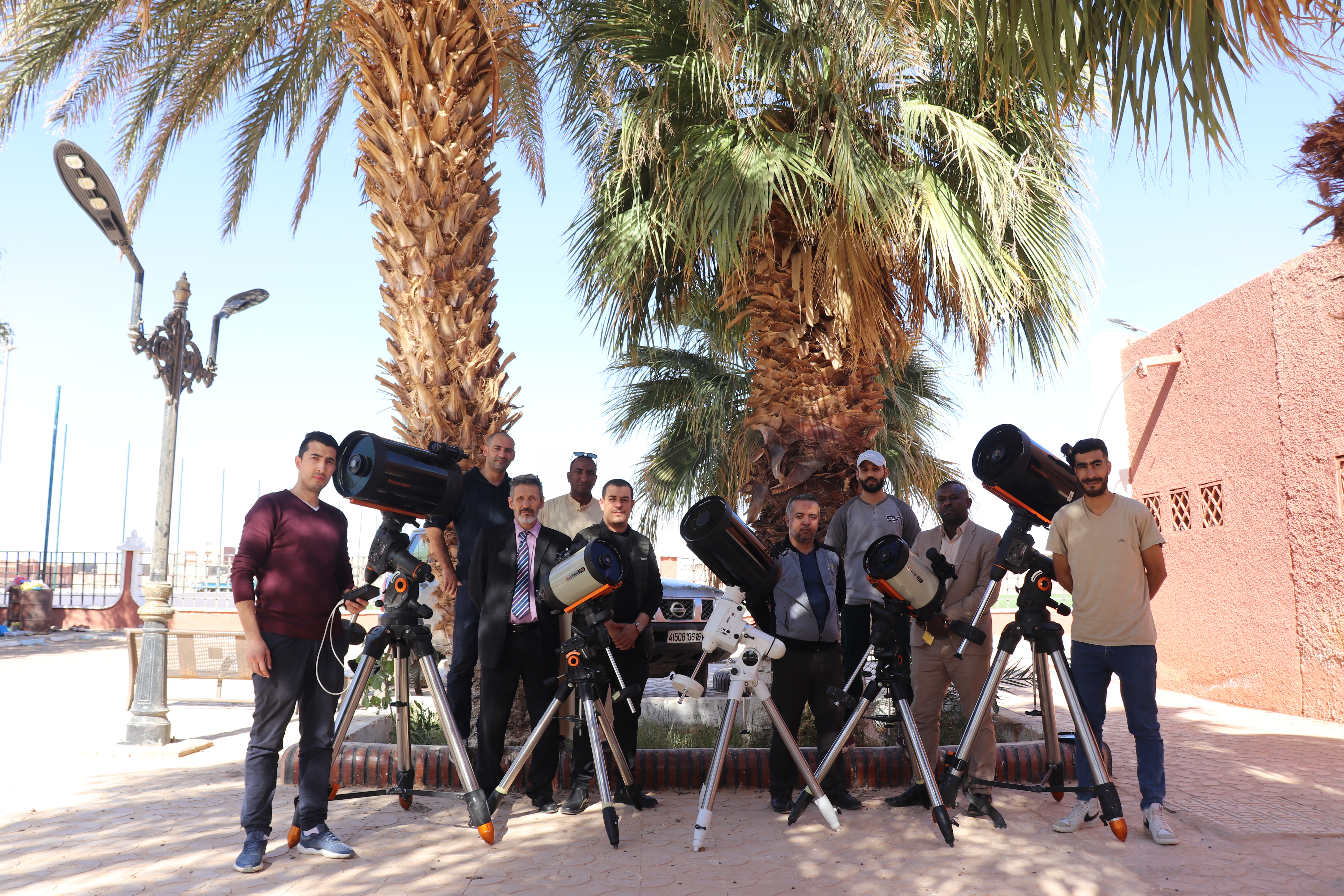Successful Observation of TNO 2013 LU28’ Stellar Occultation in the far Southern of Algeria on February 18, 2025
The celestial body 2013 LU28 is a Trans-Neptunian Object classified as a Centaur due to its elliptical, highly eccentric, and retrograde orbit. Its trajectory is similar to the orbits of periodic comets such as Halley's Comet but lacks a coma or tail characteristic of comets. It was discovered on June 8, 2013, by astronomers from the Mount Lemmon Survey at the Mount Lemmon Observatory in Arizona, USA.
Following its identification, astronomers have known very little about it, except that it has an inclination of 125° and an eccentricity of 0.953, making it a truly fascinating object.
Ever since its first observation, several attempts to track stellar occultations by this famous asteroid have been unsuccessful, until January 30, 2025, when David Dunham & al. from IOTA organization successfully observed multiple positive chords in Maryland (USA). Based on this historic achievement and the data obtained, several astronomers, including Damya Souami from Paris Observatory (France) and Lucky Star Team, and José Luis Ortiz from the Institute of Astrophysics of Granada (Spain), refined their calculations to improve the prediction of the stellar occultation on February 18, 2025, which passed through the far south of Algeria.
It was therefore a great challenge. Observing this occultation was crucial. Indeed, since 2016, researcher BABA AISSA Djounai from the Center for Research in Astronomy, Astrophysics and Geophysics (ex Algiers Observatory) has been the driving force behind the initiative of participative astronomy applied to the observation of stellar occultations by small celestial bodies. In line with this topic, the CRAAG delegated and assigned BABA AISSA to lead a scientific expedition to the remote southern region of Algeria, Commissioned with this mission, he was deployed on the field in collaboration with three members of Suhail Astronomical Association of Laghouat and a member of Bejaia Youth Scientific and Technical Activities League.
The observation team traveled to Adrar to optimize observation conditions, deploying five telescopes. The objective was to observe the occultation of the star TYC 2444-00090-1, located in the constellation Auriga, by the TNO 2013 LU28 on February 18th, 2025, at 00:24 UTC. The expedition's logistics, accommodation, and catering were managed by Adrar Youth and Sports Department, ensuring optimal conditions for the observers, as well as the work coordination was established by Ghardaia youth scientific and technical activities league. For the first time in Algeria, four positive observations were recorded (station N°01, N°02, N°04 and N°05) with a single observation with technical failures (station N°03), marking a landmark achievement and a significant milestone in observational astronomy of trans-Neptunian objects. These data will contribute to refining the orbital and physical parameters of 2013 LU28, as well as enhancing our understanding of distant icy bodies in the Solar System. The results of this expedition will certainly be thoroughly analyzed and disseminated within the international scientific community.

Photo of the Algerian CRAAG team with amateur astronomers in Adrar alongside the telescopes used

Illustration presenting the technical data sheet of the occultation of the star TYC 2444-00090-1 by the TNO 2013 LU28 on February 18, 2025

Image of the occulted TYC 2444-00090-1 star by TNO 2013 LU28 obtained by the telescopes at stations No. 04, along with the corresponding light curves

Map of the five stations distributed along the occultation band's trajectory between the cities of Adrar and Reggane




